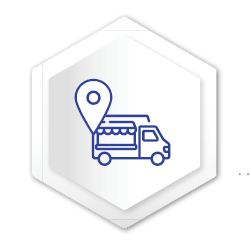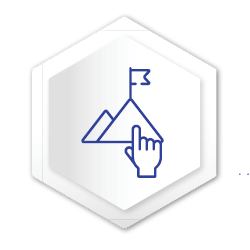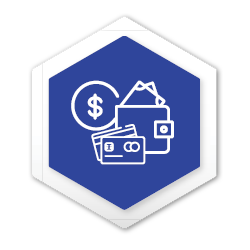
So, you’ve heard about pop up shops, but you’re unsure if they’re for you. Here are four reasons to persuade you. One, they allow you to educate your target market. Two, they’re high impact and cost-effective. Three, you can use them to attract more customers. Then there is the point that the pop-up shop sector is worth $50-billion.
Those aren’t the only reasons why a pop-up store is good for your business - read this piece for more. As for the valuation, that's thanks to in-store analytics firm, RetailNext. It’s also worth pointing out that that figure only applies to the US market, and they appraised the sector in 2016.
Since then, the industry has undoubtedly evolved and grown to reach new markets, which means many more retail brands have embraced them. And successfully so. That said, you can’t just open such a store. Instead, you need to strategise and understand why you’re doing it.

Choose your location wisely
While the space your future pop up store will occupy is not going to be large, that doesn’t mean that you don’t need to think about where you’re going to position it. After all, this isn’t as simple as finding a spot that looks good and then setting up shop.
Similar to choosing a location for your stores, you need to be strategic when selecting the appropriate site for your pop up.
That includes firstly deciding where you want to place it. For example, do you want to set up in a shopping mall or somewhere similar? Or, do you want to set it up outside of a traditional retail space? Also, is your pop up store going to be static or mobile? Once you’ve decided, you can begin scouting those locations that meet your expectations.
And as you do, you can ask yourself a set of questions. While these questions would be more appropriate for you if you’re considering a static stall, you could apply a few to your store if you’re going the mobile route. For the sake of inclusion, below are a few questions that you can apply to both scenarios:
- Does the location offer you an appropriate amount of foot traffic?
While high foot traffic sounds fantastic, it doesn’t automatically lead to more sales. Thus, when asking this question, it’s also worth asking how much of that potential foot traffic is your target market. While the amount can vary depending on the goal you’ve chosen for the store, if you’re not happy with the potential, don’t be afraid to choose a different location.
- Does the location have adequate parking nearby?
If you’ve set up your store in a hard to access space where parking is limited, you’ve made it that much more difficult for yourself to succeed. Instead, find an area that is easy to visit (also accessible by public transport) and has enough parking.
- Are there other retailers nearby and do they complement what you offer?
No matter if you’re choosing to locate your store on the beachfront, at a market or even in a parking lot, when selecting a spot, you need to ensure that there are other stores nearby that complement what you have on offer. If they shop in those stores, there is every possibility that they’ll visit you too.
Other key questions revolve around leases and business permits. We dig into these at a later point.

Be creative (but stay on brand)
No matter if your pop up shop is fixed or mobile, one thing is sure: you have the space to explore and test new concepts.
Of course, with this freedom comes a word of warning. As much as you should attempt to be creative - creativity attracts the eye and pulls in customers - you shouldn’t get to the point where you are unrecognisable.
A better way of explaining that is such: be creative but stay on brand.
There are plenty of examples of brands who have pushed the creative boundary but not so must that they are indistinguishable. That said, it’s also worth noting that creativity doesn’t necessarily mean you have to go crazy and attempt something out of the box. It just means creating a space that is attractive enough to pique the interest of your target market.
For example, if your store caters to an older market, the last thing you’d want to do is create a space that looks like it’s more appropriate for a younger market. The same goes for if your target market is the youth. What will end up happening is in your effort to be different, you’ll include all sorts of elements that would alienate rather than welcome your target market.
Karla Cook, the editor of HubSpot’s Marketing blog, pinpoints a couple of creative ideas. A simple glance at her piece will show you that none of these brands attempted to be something that they’re not. Instead, while indeed creative, they all used this as an extension of their brand. What’s more, the connection between what they did with their store or event and their brand makes sense to customers.

Know what you want to achieve before you begin
When it comes to opening a pop-up store, it’s all well and good to decide on your location and how you want to present yourself. Both are crucial decisions, and getting them wrong can severely hamper your chance of success.
However, the fact of the matter is that they both count for little unless you’ve first decided on why you want to open up such a store. In other words, you need to find your purpose.
Or, posed as a question: What is the goal of opening a pop-up shop?
There are generally two main objectives. They are:
1. You want to increase your sales; or
2. You want to generate brand awareness.
As for which goal you should strive for, while that’s partially your prerogative, it does help if you can match what you intend to do with your stall to a primary goal. It’s worth noting that these objectives aren’t necessarily independent of each other.
For example, if your primary goal is to generate more sales, you could look at stocking products that have proved popular in-store. By going to your customers with items you know they will buy, you’re opening yourself up to new sales. You could also look at using it to host a sale to get rid of old inventory. Regardless, you’d generate some form of awareness.
If you want to generate brand awareness, it might be a better idea to set this up as an event and instead of selling, focus on educating your customers about your product, be it a new line or not. But that doesn’t mean you shouldn’t attempt to sell. It’s still worth stocking up on products so that if someone does want to buy, they have that option.
The bonus of generating awareness around your retail brand is that you’re also able to engage with your customers and they can put a face to a name. As soon as that happens - your shoppers get to interact with you - there is every possibility of forming a long-lasting personal connection with them that can lead to brand loyalty.

Figure out how your customers are going to pay
Regardless of the goal that you choose for your pop up store, you will need to know how you are going to ring up and track sales.
That means you need some form of point of sale (POS) system. A traditional POS system includes a combination of software and hardware. Hardware includes your checkout counters, registers and the like while the software is a little more complicated.
Since pop up retailing is temporary by design, it’s not always worth investing in a sophisticated system. It could end up costing you more to set it up than it’s worth if you’re a small retailer. That’s not to say that you shouldn’t install a checkout counter with a cash register and software. But, it is best to look at your budget and work according to that.
Want to turn your retail data into actionable insights? Talk to us
If you do find that your budget doesn’t allow for it, there are plenty of other affordable electronic POS options that you can use. You could invest in a cloud-based POS system, which is especially helpful if you are mobile and move from location to location.
That said, it might be worth employing both instances for your pop up. For example, if your checkout line is too long, you could have staff going to customers and ringing up purchases from a tablet.
Also, it’s essential that you check all your technology before opening. One of the last situations you’d want to face is one where you’re about to make a sale, and you find that your system is faulty. You could record the transaction manually, issuing a written receipt yourself, but that task becomes increasingly difficult if you have to do this for all purchases.

Ensure you have the right business license or permit
While getting the necessary documentation to prove that you have a right to do business isn’t the most exciting, it is still a crucial part of setting up shop. After all, even if your space is a fraction of that of your brick-and-mortar store, you still need to operate within the law.
Here’s a brief breakdown of what you’d need:
- A business license or permit
The type of license you need will depend on the products you sell. For example, if you sell alcohol or food, you would need a permit allowing you to do so. Meanwhile, you’d need a different license if you are selling general items. The license and permit will also depend on the country or area in which you intend to operate.
- A lease where necessary
If you’re set up in a vacant space or within a shopping mall where you need to pay rent, you’ll need to sign a short-term lease.
There are some spaces where you might need to sign a lease to trade. For example, you might not need to sign one if you’re selling on the beachfront. However, if you are unsure, it's best to either ask fellow pop up shop owners in the vicinity or those who own and manage the area where you want to trade.
Conclusion
DotActiv Lite, Pro, and Enterprise are all different versions of our category management software that allows you to drive category performance. You can visit our online store here or book your free custom exploratory consultation here.


